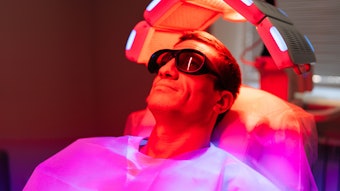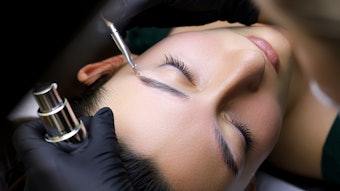The new skin of color (SOC) is the ultimate snapshot of the future of your esthetic clientele. Throughout the past decade, the traditional skin care needs of your clients have changed dramatically, due to an increasingly interracial population.
In my own family, my niece is part Chinese and half Caucasian. How should her skin be treated—as Anglo or Asian? My stepchildren are Hispanic and Caucasian. Should their skin be treated as Latino or Northern European? This is the challenge of skin care specifics—dealing with an entirely new generation of skin colors and types that now are identified as the new SOC.
This will dictate the trends for the treatments offered at your spa. Skin care specialists, estheticians, dermatologists and cosmetic surgeons must prepare for it. You need to learn to recognize what is appropriate and inappropriate concerning all skin treatments and products available for this new SOC, as well as all ethnic skin types. Incorrect treatments and products are a recipe for skin disaster, so it is imperative for skin care professionals to understand the physiology, anatomy and histology relating to this demographic.
Biological hallmarks
A hallmark biological feature in SOC is the amount and epidermal distribution of the cutaneous pigment, melanin. Its biosynthesis occurs within the metabolic unit of the melanocyte, known as the melanosome. The melanocyte is present in the basal layer of the epidermis and in the matrix portion of the hair bulb. It is a well-established fact that there are no racial differences in the number of melanocytes in all SOC; rather, the differences lie in the number, size and aggregation of melanosomes within the melanocyte and keratinocyte—a cell that produces keratin—as well as in how they are distributed within the skin’s environment. Studies suggest that there are quantitative and/or qualitative variances in fibroblasts—cells that make connective tissue components, hair follicles, elastic fibers and macrophages—cells that perform crucial functions in the immune response and inflammation, in the different SOCs, as well. These factors alone influence treatment specifics for SOC and cannot be ignored.
A rainbow of colors
There are many shades that make up the numerous skin types in the world. Cosmetically speaking, black skin has a wide spectrum of color variations, from creamy light coffee to deep ebony. Asian skin exhibits colors that range from very white to light yellow to a dark golden tan. Native American skin colors vary with respect to different tribes and range from light to dark red-brown. Even Caucasian skin differs greatly, from milky alabaster to dark olive.
In the United States today, racial and ethnic classifications of those with pigmented skin include African-Americans; Caribbean-Americans; Asian and Pacific Islanders, which consists of Filipino, Chinese, Japanese, Korean, Vietnamese, Thai, Malaysian, Laotian and Hmong people; Native Americans; Alaskans and Aleuts; and Latino or Hispanic, comprising those of Mexican, Cuban, Puerto Rican, Central American or Spanish origins. Also included are those traditionally categorized as Caucasoid, including the majority of Indians, Pakistanis and Middle Eastern ethnicities. Wide arrays of individuals have been classified as Asians and Mongoloids. Spa clients embody all of these racial varieties, and many possess the ethnic blending that creates the new SOC.
Sun Protection Type
Medical professionals commonly have referenced all darker skins types as IV, V and VI, based on the Fitzpatrick Skin Type scale. Another classification of skin takes this further by providing a more thorough skin-typing method that acknowledges the overlap of ethnicities and provides additional insight, as well as a wider margin of safety, when treating a particular ethnic skin or blend. This is known as the Sun Protection Type (SPT). It classifies all ethnic skin types using the scale I, I.5, II, II.5, III, III.5, IV, IV.5, V, V.5 and VI. I equates to the lightest European skin, and VI signifies the darkest African skin, with all the other numbers representing the influence of one or many blended races.
Treating SOC concerns
Armed with this knowledge, you now must learn how to assess, treat and recommend the appropriate skin care for each of your clients. These new skin challenges are not only exciting, but also will drive new business into your spa and provide an unparalleled referral system. Following are several of the most common SOC skin care concerns.
Sensitivity. African-American skin is very sensitive, despite the myth that, due to the depth of its color, it can withstand strong ingredients. Avoid using aggressive peels, such as alpha hydroxy acids (AHAs) and beta hydroxy acids (BHAs), as well as other peeling solutions, until you become familiar with how the skin responds to various percentages and pH levels of these components.
Dryness. Darker skin types also are susceptible to dryness, which could be due to lower ceramide levels in the stratum corneum. Natural desquamation (flakiness) is easier to detect on black skin than it is on white skin because of its gray appearance. If you are treating this SOC type with any peeling solution, keep in mind that you are eliminating a valuable source of ceramides that already is scarce. Replacement of this substance is crucial, in addition to the application of other ingredients that replenish and retard subsequent reactions of the melanocytes that produce pigmentation morbidity.
Sun damage. Melanin is enhanced by exposure to ultraviolet (UV) radiation. The protection afforded against sunburn by a black epidermis is, on average, equivalent to an SPF of 13.40. However, a wide variation exists between individuals, due to the differences in pigmentation and the influences of other races.
The fact that darker skin is more protected than lighter skin is by no means cause to eliminate the use of sun protection. Pigmented skin injured by UV radiation experiences photodamage that can be manifested by histological epidermal irregularities and atrophy, dermal collagen cross-linking, and elastin damage. This is evidenced by the clinical appearance of hyperpigmentation, even though wrinkles are not always apparent. Simply put, any dark skin that exhibits hyperpigmentation is photoaged and photodamaged, and requires treatments to correct and preserve its integrity. Natural UV protection can be established with a thorough skin analysis, and should influence your course of professional treatment and home skin care maintenance.
Pigmentary disorders. The prevalence of pigment disorders in black skin is a result of the use of topical products that are unsuitable for the skin type or monitored incorrectly. Many hair pomades and conditioners that are popular with individuals of the African, African-American and African-Caribbean communities can contain various mixtures of petrolatum, lanolin, vegetable and animal oils, and low-grade mineral oils from unknown sources. When used on the hair, these agents can creep onto other areas of the facial skin and produce papular and comedonal acne, which can lead to post-inflammatory hyperpigmentation. This also can be true of many skin care products that do more harm than good.
Photoaging. Photoaging in Asian skin essentially is manifested by dyspigmentation, lentigines (age spots), seborrheic keratoses and mottled hyperpigmentation. Many older Asian women apply a sunscreen, carry an umbrella and wear gloves in order to shield themselves from the sun. Pigmentation is considered unacceptable within the Asian culture, and clear, pigment-free skin is valued highly. Wrinkling, which tends to be a late feature of photoaging, is more common in Far Eastern Asians who live near the equator.
Acne. Treating acne for SOC includes the use of a myriad of home care and clinical remedies. Most agents used to address this condition are antibacterial and comedolytic to target the various pathogens that are responsible for the development of acne vulgaris. However, many of the ingredients needed to manage acne can cause a rebound in hyperpigmentation if not administered properly. These constituents and their irritating nature do not mean that you should avoid them—just understand them, as well as the type of skin to which they are exposed.
When it comes to acne in the new SOC, further complications can arise that result in additional challenges. For instance, some ethnic combinations genetically produce an abundance of oils in the sebaceous follicle environment, yet have a pore size that is extremely tight, due to other genetically influenced factors. This makes it next to impossible to extract lesions. When facing this type of situation, use caution to avoid causing any injury that will exacerbate the pigmentation. Knowing the genetic history of your clients’ skin and what makes it tick will enable you to be more effective with the treatments you provide.
Rosacea. Rosacea occurs in SOC, although it is not as common as in lighter Northern European skin types. Conduct a careful analysis of your clients’ family history, including cultural practices, such as diet, in order to yield invaluable information regarding common rosacea triggers. Be careful not to overlook bumps or pimple-type lesions on the skin or to attribute them to acne vulgaris. Stinging or burning is the most common complaint among rosacea sufferers, and, because SOC is darker, this condition is more difficult to detect. Remember, acne and rosacea can go hand in hand, and each must be treated individually with respect to skin type and skin condition.
Pigmentation. Inflammation is the leading cause of pigmentation in SOC skin types, and because the microdermabrasion concept is based on mechanical irritation, you should avoid treating SOC by using this modality. This professional method not only can be responsible for unwanted pigmentation in SOC, but it also can cause the insertion of micro-fine crystals into the skin. Unfortunately, these eventually can lead to “pigmentation streaks,” which are very difficult to treat.
SOC skin savvy
So, are you skin savvy enough to treat the new SOC? Product advancements and clinical protocol, coupled with an in-depth understanding of these special skin types, will provide advantages for your spa. It is the well-informed professionals who will inherit the future of esthetics, and this never has been as true as it is with SOC—the future of skin care.










